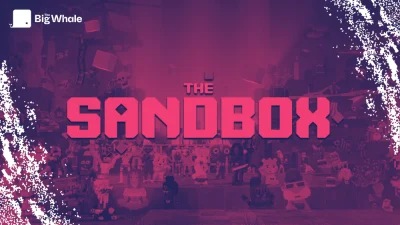What trace will the Libra project leave in the history of finance?
While it is as yet impossible to know precisely, it is at least clear that it will be talked about for years to come.
Firstly, because - beyond its failure - it represents the first attempt to create a kind of private digital currency. It was forgotten fairly quickly, but when it was launched in 2019, Libra had brought together 27 companies, including giants such as Uber and PayPal.
Then, because as with many projects, Libra was not just an end (the project was abandoned in 2022), but above all the beginning of something else. Some of the team went on to create Aptos, and others Sui.
Today, the two blockchains, which claim a common heritage, are among the most promising projects.
What are their differences? What are their advantages? Is there room for both?
To answer these questions, we went back over the history of Libra and what gave rise to the two projects.
From the collapse of Libra to the birth of two unicorns "Many of us decided not to give up on the mission," recalls Dante Disparte, former chief executive of the Libra Association and now chief strategy officer of Circle, the issuer of USDC and EURC stablecoins.
For him, the end of Libra was as much a failure as a springboard. "Libra failed partly because of external constraints, but its technology and vision were solid. Its architects chose to continue that mission in other forms," he continues.
"Some, like me, chose to continue part of Libra's original mission, for example with Circle, developing regulated and reliable stablecoins. Others decided to tackle technological challenges to create high-performance, secure blockchains," he explains. This is how Aptos and Sui were born.
Both projects are based on the technology originally developed for Libra, primarily the Move programming language, developed by major figures, such as its former CTO Dahlia Malkhi, now an advisor to the blockchain oracle Chainlink and the Espresso interoperability project.
This language continues to be a benchmark in the industry, as our exchanges with numerous experts have confirmed in recent months.
But why two separate projects from the same technology base?
"That's a very good question," replies Dante Disparte. "It reflects entrepreneurial dynamics. Each project has its own ecosystem and its own energy. Success in this sector often depends on the management team and the ecosystem they build."
The technological pillar: the Move language Designed from the outset for fast, secure transactions, the Libra blockchain had some unique features. This approach was designed to facilitate adoption by businesses. "The Libra blockchain was haute couture," describes Dante Disparte. "It was designed for one purpose: high-speed, low-latency transactions. Several years on, Aptos and Sui continue to demonstrate those capabilities."
An assertion that Mo Shaikh, principal figure at Aptos, confirms in a video interview with The Big Whale : "The Move language is designed to handle both simple and highly complex smart contracts, offering flexibility for a wide range of use cases - from sole traders to large enterprises."
He continues: "One of Move's most notable features is Move Prover, which enables formal verification (mathematical method for proving that a code specifically complies with defined properties and rules, ed. note). This is essential for guaranteeing the security and reliability of smart contracts, Move has attracted so much interest that other blockchains have announced initiatives to implement it." The Movement Labs start-up is currently working on its integration into Ethereum and Solana projects.
For its part, Sui claims authorship of Move, advancing that the project counts the real architect in its team. "Move was initially developed by Sam Blackshear, the CTO of Mysten Labs," asserts Adeniyi Abiodun, co-founder of the start-up behind Sui, in a video interview with The Big Whale.
Currently, Aptos and Sui are the blockchains touted as the fastest on the market: Aptos boasts more than 160,000 theoretical transactions per second, while Sui claims to be able to handle 300,000 at maximum capacity. While this battle of numbers doesn't mean much, it does testify to the teams' commitment to developing the most efficient protocols.
>> Read our fundamental analysis of Sui
Hundreds of millions raised thanks to the Libra label But while the two blockchains share a technological base, their trajectories differ.
Aptos, driven by a charismatic team, has raised significant funds from major investors ($400 million in total). According to Dante Disparte, "Aptos has attracted the attention of major companies, such as Franklin Templeton, which has chosen the protocol to launch new projects, such as its FOBXX tokenised money fund."
Sui (which has raised $385 million between 2021 and 2023), for its part, has focused on building a solid and secure ecosystem. Circle, the issuer of stablecoin USDC, chose to integrate with Sui before adding Aptos. Why this choice?
"Our selection of blockchains is completely neutral," says Dante Disparte. "We look at performance, security and the dynamism of the ecosystem. This has nothing to do with choosing a winning project."
The name "Libra" on the CVs of the two projects undoubtedly weighed heavily in the decision to invest venture capital funds. "Libra's alumni had solid connections in the world of finance and technology, and their credibility reassured investors," confirms Dante Disparte.
"Unlike other more artisanal blockchain projects, Libra had assembled highly qualified profiles and recognised experts. This gave them a clear advantage in a blockchain ecosystem where trust and relationships are essential to obtain financing", blows a source close to one of the investors.
The "Libra mafia" Today the network of Libra alumni is not just Aptos and Sui. It plays a key role in the success of other projects stemming from this ecosystem.
David Marcus, who was head of Calibra (the Meta subsidiary dedicated to the project and its wallet), launched Lightspark, a company specialising in Bitcoin infrastructure. In less than 3 years, Lightspark has become a major ambassador for the market's leading crypto.
"We also learned the biggest lesson of all [through the failure of Libra], which is that if you're trying to build an open money network for the world - potentially moving trillions of dollars a day, designed to be around in 100 years - you have to build it on the most neutral, decentralised and unassailable network and asset, which is, without question, Bitcoin ", he said in a tweet on 30 November.
Bertrand Perez, another pillar of the project, is now working on Web3 initiatives. And Dante Disparte himself continues to promote the vision of a reliable and regulated digital currency with Circle.
"Libra was a technological and financial success story," says Dante Disparte. "The astronauts who were in the rocket chose to explore other horizons. It's incredibly inspiring to see that no one gave up," he insists.
Competitors or allies? While it's too early to say who the winner will be, it's undeniable that Aptos has benefited from a more high-profile launch, with massive support from institutional funds such as Franklin Templeton.
This has enabled them to rapidly develop their ecosystem (nearly 200 projects) and gain visibility. Their main strength lies in their ability to attract developers and businesses thanks to a clear strategy and charismatic leadership. Mo Shaikh, for example, plays a central role in mobilising this ecosystem, drawing on a strong vision and significant organisational capabilities.
"Although both platforms use Move, our implementation and improvements are a notch above ", says Mo Shaikh. "We have gathered a lot of feedback from the community, which has allowed us to evolve Move faster than any other smart contract language."
Sui, on the other hand, places more emphasis on technical performance and security. They were the first to implement certain innovations from Libra, which gives them an advantage in terms of efficiency. "The main innovations around Move continue to happen with us," assures Adeniyi Abiodun of Mysten Labs.
However, this ecosystem is still developing, and they face the challenge of attracting more partners and projects (currently fewer than 100). The greater rise in the price of its token, SUI, will be an important argument (500% over one year, compared with 82% for APT, with a capitalisation already twice as high for Sui).
"Ultimately, the competition between Sui and Aptos reflects a similar dynamic to that of the great technological battles such as Blu-ray versus HD-DVD (digital video medium created by Toshiba in 2003 and abandoned in March 2008, editor's note)," explains Dante Disparte. "It will be the ecosystem and the community that will determine the winner, rather than technological superiority alone," he continues.
"Eventually, large companies and users will no longer differentiate between blockchains," judges this key witness. "What will count is the ecosystem, leadership and the ability to attract developers."








